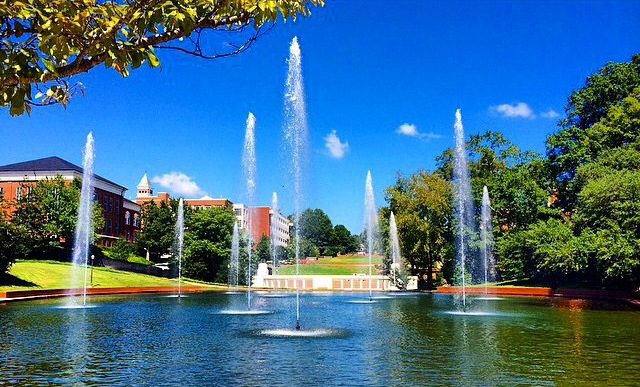At its 2021 Fall Quarterly Meeting, the Clemson University Board of Trustees provided initial approval for a series of housing capital projects and a new Advanced Materials Innovation Complex, approved the creation of the School of Mechanical and Automotive Engineering, and received various updates from vice presidents on the University’s work over the past three months.
In Chair Kim Wilkerson’s first quarterly meeting after her July election, the Board extended the contract of President Jim Clements for five years through June 30, 2026, and unanimously elected Trustee Bob Peeler as Vice Chairman. Trustee Peeler, a 1991 Clemson graduate, served as Lieutenant Governor of South Carolina from 1995-2003.
Highlights of the information items included Provost Bob Jones sharing the positive results of moving Clemson back to fully in-person instruction starting in the Fall semester and the significant headway the University has made winning major fellowships, including back-to-back Truman and Udall Scholars for the first time in the school’s history. Provost Jones also explored how in-person experiences will continue to be essential for the student experience but how responding to the pandemic had presented new opportunities.
Tony Wagner, executive vice president for Finance and Operations, told the trustees that despite the impacts of COVID-19, Clemson’s financial position remains strong. Clemson’s overall credit profile still scores in the Aa category. Total revenues increased in large part due to COVID-19 stimulus funds and higher rates of return on endowment balances.
President Clements’ report included information on the Fall 2021 incoming class, consisting of more than 4,600 students and an average SAT score of 1311 and an ACT score of 29.4. Research expenditures jumped by $10 million to $229 million, and competitive research awards increased 37 percent to $162 million this past fiscal year. He also informed Trustees that the value of the endowment closed Q3 at more than $1 billion, a significant milestone in the University’s continued fundraising efforts.
ACTION ITEMS
HOUSING
- Concept Phase I of the Bryan Mall High Rise Renovation Project, which includes a renewal of three high-rise buildings and a renovation of three low-rise buildings at the cost of $100 million. Renovating high rises is less than half the cost of replacement and retains the University’s inventory of affordable student housing.
- Concept Phase I of the Johnstone/Union Demolition Project, which reduces operating costs by $1.6 million, reestablishing green space in the center of campus to support student-related activities.
- Concept Phase 1 of Green Tiger 1, an energy savings project, which will establish a budget of $600,000 for Johnson Controls to study the University’s 108 buildings and determine the recommended scope of work that will maximize the University’s opportunity to save on utilities and address maintenance and repair needs for end-of-life systems
ACADEMIC FACILITIES
- Phase I of the Advanced Materials Innovation Complex Project, which, at a projected cost of $130 million, adds 143,000 square feet of space supporting research and learning in advanced materials to help create the next-generation workforce of engineers and scientists.
The next quarterly meeting of the Board of Trustees is scheduled for February 2-3, 2022.

